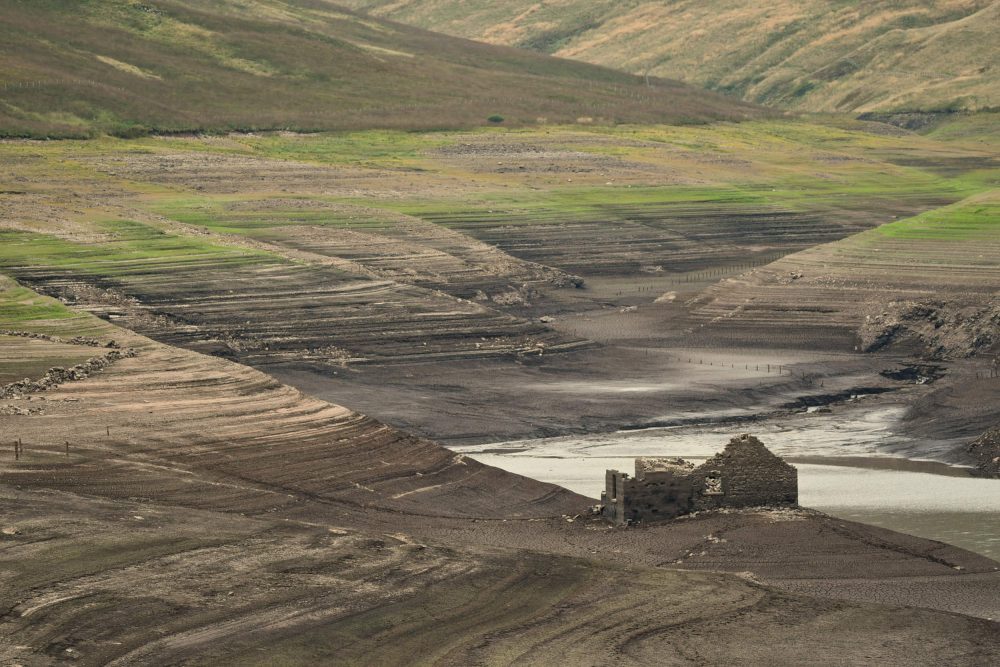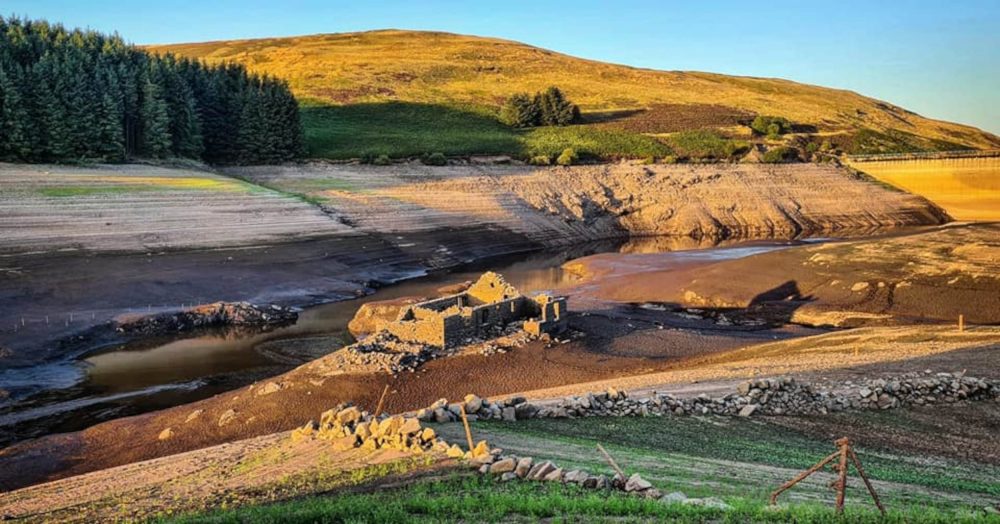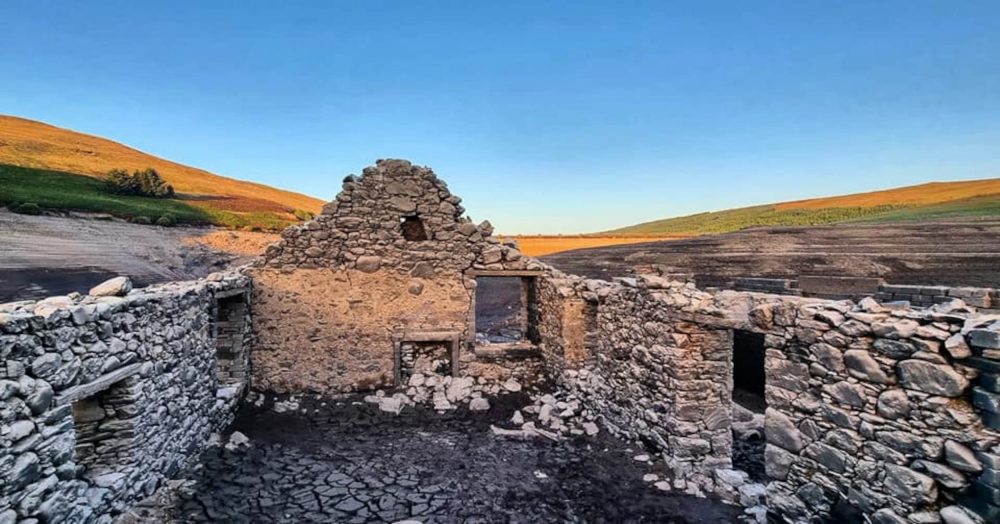AN OLD farmhouse and sheep pen have fully emerged from the bottom of a Scots reservoir after a massive water shortage.
Following Scotland’s second driest summer in 160 years, the Upper Glendevon Reservoir in Perthshire has almost completely drained, exposing the land underneath.
An image taken by local Scot Carol Bone shows just a large puddle of water left at the bottom of the reservoir area.

The image, which was taken on Sunday, also shows the large area of land around the puddle which is usually underwater.
The stone ruin of the farmhouse is fully visible, having previously been slightly exposed in 2014.
The line that the water is usually at can be seen in the grass as the lush green colour turns to a desolate grey.
A vertical line of small wooden sticks across the centre of the reservoir are also fully exposed.
Other images taken by Nicki Armour show the reservoir in the sunset yesterday morning.
Nicki ventured inside the farmhouse ruin and took photographs showing what was left of the building that has been underwater for over 65 years.
The normal height of the water is around 140 feet.
The water is significantly below the farmhouse, which is only fully visible when the water is below 90 feet.
Carol, from Clackmannan, posted her picture on Facebook on Monday with the caption: “A farmhouse and sheep pen which have re-appeared on the bottom of the upper reservoir at Glendevon.
“Incredible amount of water has gone.”
The post now has over 2,500 likes, with over 300 people commenting on the shocking water shortage.

Kate Thomson said: “This is sad on so many fronts.
“I always feel sad to think of houses and farms submerged under reservoirs (but fully appreciate the reservoirs are essential) and when they are exposed like this it’s like a gravestone to generations of farmers, as well as being properly spooky.”
Katy Mackin commented: “It’ll be an AirBnB by the weekend!”
Graeme Brown replied: “So many new housing estates getting built in Fife but with the same amount of water supply it will only get worse.”
Helen Green added: “It’s actually quite scary how deep those reservoirs are when they’re full”.
Speaking today, Carol said: “I knew it was low before I went up to the reservoir.
“The emergence of buildings was interesting to photograph.
“When I saw it I was amazed at the scale of the reservoir.
“I thought it was an amazing sight. It was the first time I’ve seen it.”
Nicki said: “We didn’t realise there were two parts so when we first arrived and saw it was full of water we were disappointed.

“We walked about 45 minutes then realised it was maybe just ahead.
“Then, wow, we fell upon it and were so glad we kept going.”
The buildings were submerged when the River Devon was dammed to create the Reservoir in 1955.
It provides drinking water for large parts of Fife.
A Scottish Water spokeswoman today said: “The Upper Glendevon reservoir is one of five reservoirs that make up the Glendevon supply system and the water level of that particular reservoir does tend to drop to low levels most years.
“The combined storage of the overall Glendevon reservoir system, while below average for the time of year, is within normal operation range with no immediate concerns.
“The exposure of the old farm buildings does occur at low levels and we have seen this quite frequently in the past.
“We are seeing low reservoir levels across Scotland and would encourage all customers to continue to use water efficiently and to make small changes to their behaviour that will enable us to maintain normal supplies for everyone.”

